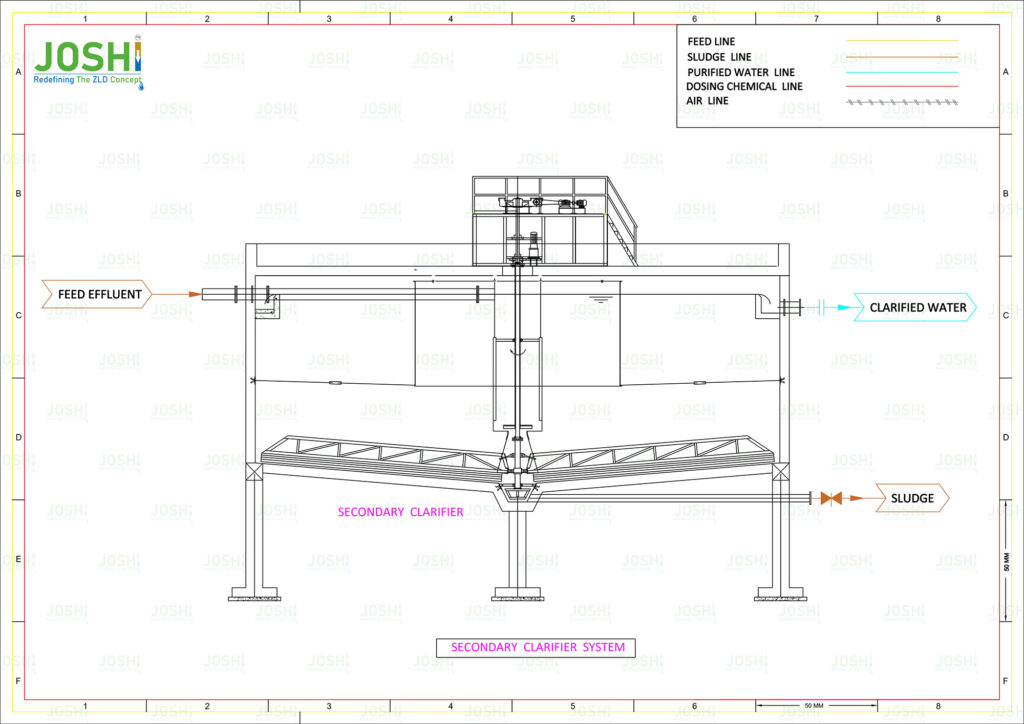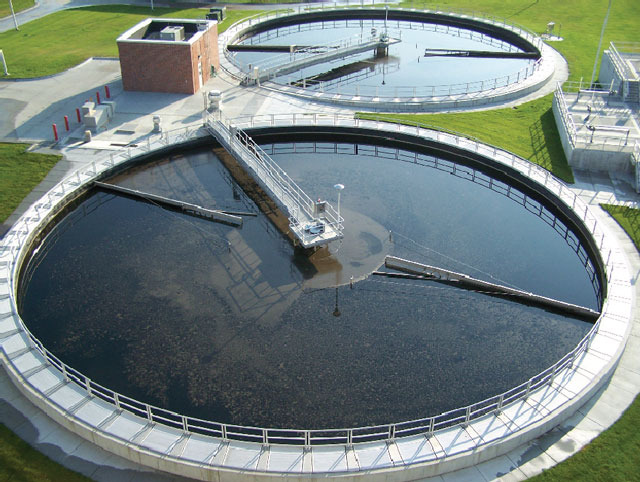Secondary Clarifier
A secondary clarifier, also known as a final clarifier or settling tank, is a key component of a wastewater treatment plant’s secondary treatment process. It plays a crucial role in the separation of solids from the treat wastewater, allowing for the clarification and removal of residual suspend solids and microorganisms.
Process Steps
After undergoing biological treatment in an active sludge process or a similar biological treatment unit, the wastewater enters the secondary clarifier. The primary purpose of the secondary clarifier is to provide a quiescent environment where gravity allows the settling of suspend solids and the separation of clarifie water from the settle solids.
Inflow: Treat wastewater from the biological treatment process enters the secondary clarifier and is distribut evenly across the surface area of the tank. The inflow is typically control to ensure a consistent flow and avoid disturbances to the settle solids.
Settling: Once the wastewater enters the secondary clarifier, it comes to a calm state. This allows the suspend solids, including microbial flocs and any remaining organic matter, to settle under the influence of gravity. The settling process is aide by the reduce flow velocity within the clarifier.
Clarification: As settling occurs, the settle solids accumulate at the bottom of the clarifier, forming a layer of sludge call the sludge blanket or sediment. Simultaneously, the clarifie water rises towards the surface due to its lower density. The clarifie water layer gradually becomes separated from the settle solids.
Sludge Withdrawal: Over time, the settle solids continue to accumulate and thicken in the clarifier’s sludge blanket. To maintain an appropriate sludge depth and prevent excessive accumulation, a portion of the sludge is periodically withdrawn from the bottom of the clarifier. This withdrawn sludge, called waste active sludge (WAS), is typically sent for further treatment or disposal.
Effluent Collection: The clarify water that has risen to the surface of the secondary clarifier is collect from the top. This effluent is now substantially free of suspend solids and can be discharge or further treat as requir before discharge.
Significance & Advantages
The secondary clarifier is design to provide sufficient detention time and a large settling area to ensure effective settling of suspend solids. Factors such as tank geometry, hydraulic flow distribution, and sludge removal mechanisms are consider in its design to optimize performance.
The purpose of the secondary clarifier is to improve the quality of the treat wastewater by removing residual suspend solids and microorganisms. It ensures that the effluent discharg from the treatment plant meets regulatory standards and minimizes the potential environmental impact.
Target Impurities
- TSS
- Biological Sludge






